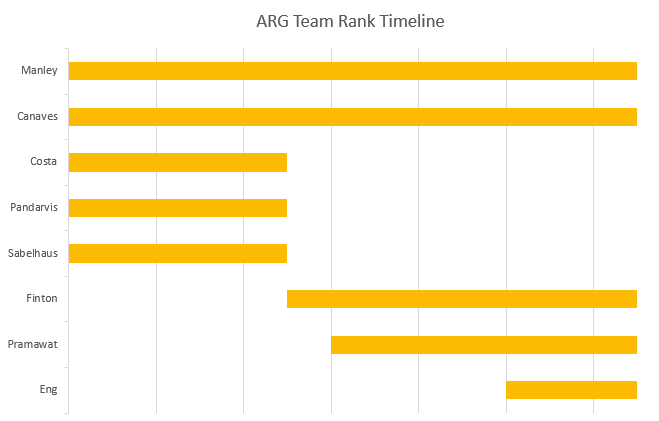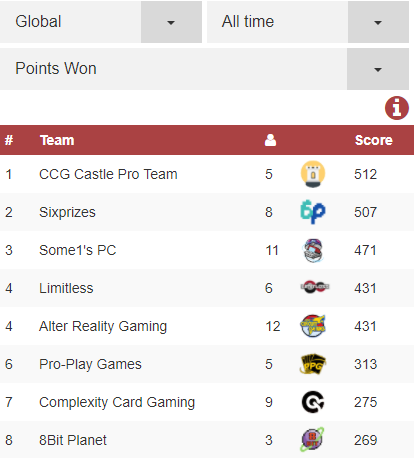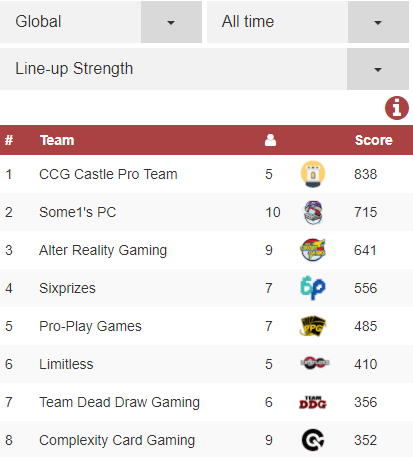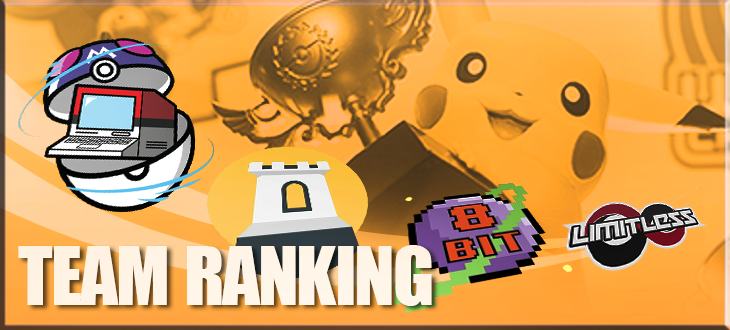Happy New Year everyone!
Competitive teams have been a fast-growing part of the Pokémon TCG in the past couple of seasons. This website always allowed an overview over different team rosters and achievements, but until now, it didn’t have the option to compare them to each other. However, today our ranking page got updated to make that happen!
As it’s difficult to rank teams objectively, and opinions on what criteria should be applied might differ, we included a bunch of different ranking methods. All are based on the same point structure the player rankings use, which you can find here.
Ranking Methods
Team Rank
This is the default ranking option. It tries to mitigate the advantage that teams with a lot of players would have when ranking by total points. At the same time, it doesn’t punish those same teams in a way like average points might do.
For each team, only the five most successful players of the selected time frame are taken into the calculation. Bigger teams still have the advantage of more opportunities to reach high points, while smaller teams are not inherently disadvantaged for having a few less players.
There’s one additional refinement: If any of the team’s top 5 players left or just joined the team during the viewed time, then that free space will be filled up by players that either joined after their departure, or left before their inclusion. If for example a team completely changed up their 5 player line-up for three consecutive seasons each, then all 15 players would count towards their all time ranking.
Currently this rule mostly applies to Team ARG. Michael Pramawat, Grant Manley, Michael Canaves, Connor Finton and Igor Costa collected the most points while being on there, but three other players also bolster up their Team Rank. Jon Eng, the most successful signing after Igor left, aside from Pramawat and Finton who are already represented in the original Top 5, and both Jimmy Pendarvis and Ryan Sabelhaus, their most accomplished predecessors.

For easier comparability, the team with the highest score in this ranking is listed at 100 points, while all the other scores are listed in proportion to that. E.g. if a team has collected half as many points as the leading one, it has a score of 50.
Points earned
Similar to the prior method, but without the “Best finish limit”. All points collected by players of the team are simply added up in this case. To the left of the team icon you can find the number of players that collected points for the respective team during the observed time.

Average Points earned
Instead of looking at total points like the first two options, this one calculates the average. This average takes every team member into account, even those who may have earned no points for the selected time. To the left of the icon is the number of players that represented the team during the time period.
Line-up Strength
While the first three methods focus on team accomplishments, the next two are only rating their most recent line-up. The major difference is points that were earned by players before joining their current team. If a team picks up a very accomplished player, their line-up becomes stronger without them actually winning any points. Similarly, if a player leaves, then their accomplishments don’t go away, but the team still takes a hit.
This ranking looks at the current team line-up, and adds all points the players collected during the time period, no matter what their team affinity was at the time. The counter to the left indicates the number of them who earned any points during that.

Average Line-up Strength
The same restrictions as above apply, but the point total is divided by the number of players on the current team roster. In this case, the counter to the left is simply the size of the line-up.
Try it out now and tell us what you think about this new feature!
Missing your team on the list?
If a team is not listed, even though it is represented by at least one player in our player rankings, please contact us through our facebook page (LimitlessTCG) and provide the following information in order to get it added:
– name to be displayed, and date of the first tournament the team appeared (month/year)
– names of each player on the line-up (Masters only!), including starting dates for everyone
– the current logo, and optionally an icon if it’s supposed to differ from the logo
– (optional) social media links
We are also doing our best to stay up to date on any line-up changes for existing teams, but it’s still likely we miss something sometimes. If you notice anything wrong or have any other remarks, don’t hesitate to shoot us a message or tag us on twitter.
!!! Edit: As of 2021, the team ranking has been discontinued and is no longer available. !!!

